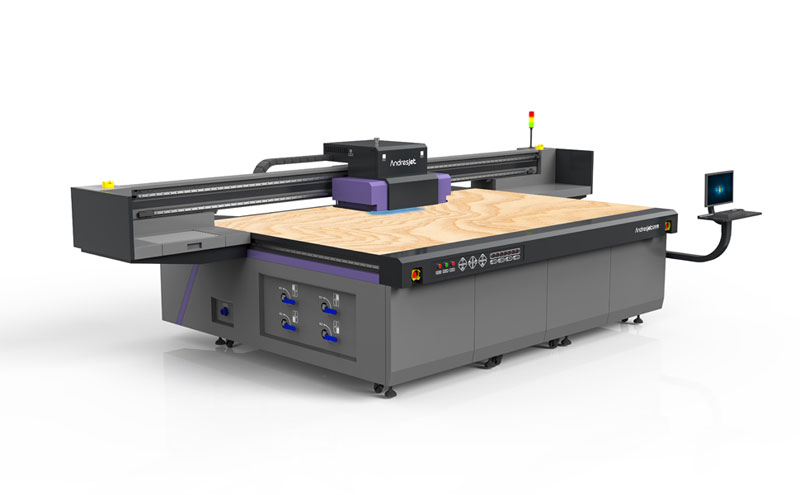What Are the Benefits of a Heated Bed in UV Flatbed Printing?
What Are the Benefits of a Heated Bed in UV Flatbed Printing?
In the realm of digital printing, UV flatbed printers have revolutionized the way images and designs are transferred onto various substrates. These printers offer versatility, precision, and efficiency, making them a popular choice for businesses seeking high-quality prints on a wide range of materials. One key feature that enhances the performance of UV flatbed printers is the heated bed. This article delves into the benefits of a heated bed in UV flatbed printing, exploring how it contributes to improved print quality, faster curing times, increased material compatibility, and enhanced overall productivity.

1. Improved Print Quality
The primary advantage of a heated bed in UV flatbed printing is its significant impact on print quality. When the bed is heated, it warms the substrate before the printing process begins. This preheating helps to reduce the temperature difference between the ink and the material, which is crucial for achieving optimal adhesion and curing. As the ink is deposited onto a warmed surface, it spreads more uniformly, resulting in smoother gradients, sharper details, and overall better image resolution.
Moreover, a heated bed minimizes the risk of ink shrinkage or cracking, which can occur when ink is applied to a cold surface and then rapidly cured with UV light. By ensuring that the substrate is at an optimal temperature, the ink cures evenly, creating a durable and visually appealing print. This is particularly important for applications where print quality is paramount, such as in the production of high-end graphics, fine art reproductions, and point-of-purchase displays.
2. Faster Curing Times
In UV flatbed printing, curing time refers to the duration required for the ink to fully harden and bond with the substrate after being exposed to UV light. A heated bed significantly reduces this curing time by accelerating the chemical reaction that occurs when UV ink is exposed to ultraviolet radiation. The heat from the bed acts as a catalyst, enhancing the ink’s sensitivity to UV light and enabling it to cure more quickly and efficiently.
Faster curing times translate directly into increased productivity, as printers can complete jobs in less time and move on to the next project sooner. This is especially advantageous for businesses that operate on tight schedules or handle high-volume printing tasks. Additionally, reduced curing times can lead to energy savings, as the UV lamps require less time to achieve the necessary cure, thereby consuming less power overall.
3. Increased Material Compatibility
UV flatbed printers are known for their ability to print on a wide variety of materials, including plastics, glass, metal, wood, and more. However, certain substrates can be challenging to print on due to their temperature sensitivity or inherent properties. A heated bed addresses these challenges by providing a controlled environment that can be adjusted to suit the specific requirements of different materials.
For instance, printing on cold or rigid substrates like glass or metal can result in ink cracking or poor adhesion if the temperature is not managed properly. By预热ing these materials on a heated bed, printers can ensure that the ink adheres smoothly and cures evenly, regardless of the substrate’s initial temperature or composition. This versatility extends the range of materials that can be successfully printed on, allowing businesses to offer a broader selection of products and services to their customers.
4. Enhanced Overall Productivity
The combination of improved print quality, faster curing times, and increased material compatibility ultimately leads to enhanced overall productivity in UV flatbed printing. With a heated bed, printers can produce higher-quality prints in less time, on a wider range of materials, without sacrificing efficiency or consistency. This boost in productivity is invaluable for businesses seeking to maximize their output while maintaining strict quality control standards.
Furthermore, the reduced risk of print errors and defects associated with a heated bed leads to less waste and fewer reprints, further increasing efficiency and cost-effectiveness. By minimizing downtime and maximizing the number of successful prints per hour, businesses can improve their profitability and customer satisfaction rates.
5. Environmental Considerations
In addition to the direct benefits to print quality and productivity, the use of a heated bed in UV flatbed printing can also have positive environmental implications. By reducing curing times and enabling more efficient use of UV lamps, heated beds can contribute to lower energy consumption overall. This is particularly important in today’s climate, where businesses are increasingly focused on reducing their carbon footprint and adopting more sustainable practices.
Moreover, the ability to print on a wider range of materials without compromising quality means that printers can often use substrates that are recycled, biodegradable, or otherwise environmentally friendly. This expands the possibilities for eco-conscious printing and allows businesses to offer green printing solutions to their customers.
Conclusion
In conclusion, the benefits of a heated bed in UV flatbed printing are multifaceted and significant. From improved print quality and faster curing times to increased material compatibility and enhanced overall productivity, a heated bed is a valuable feature that can transform the capabilities of a UV flatbed printer. By investing in this technology, businesses can elevate their printing processes, expand their service offerings, and ultimately achieve greater success in the competitive digital printing market. As the industry continues to evolve, the role of heated beds in optimizing UV flatbed printing will remain a crucial aspect of achieving excellence in print output and customer satisfaction.
